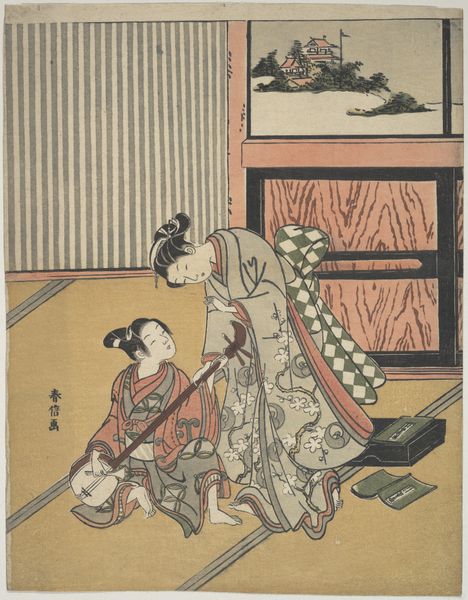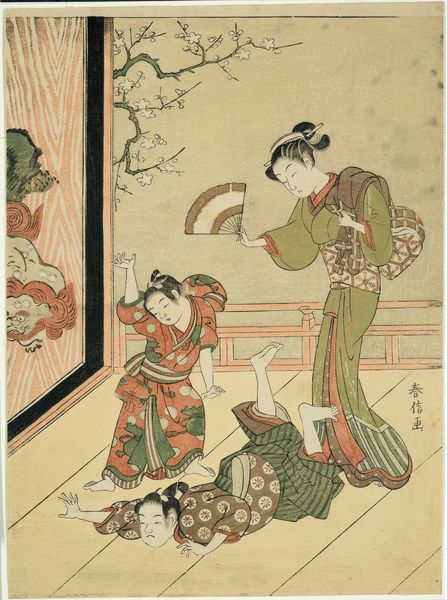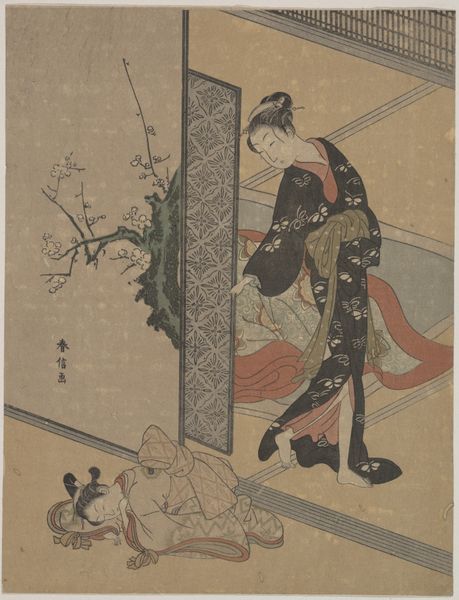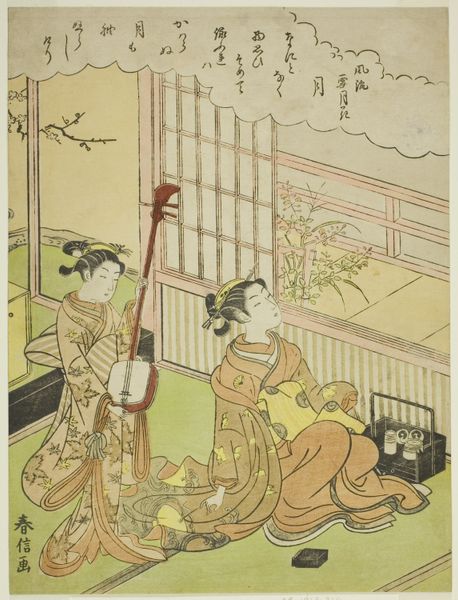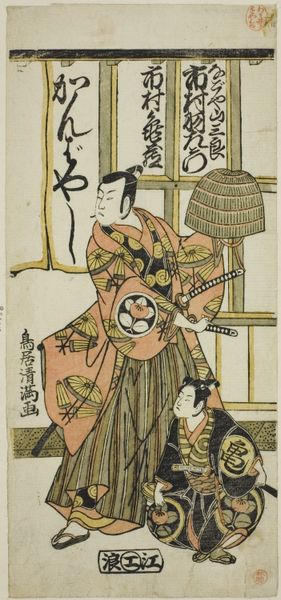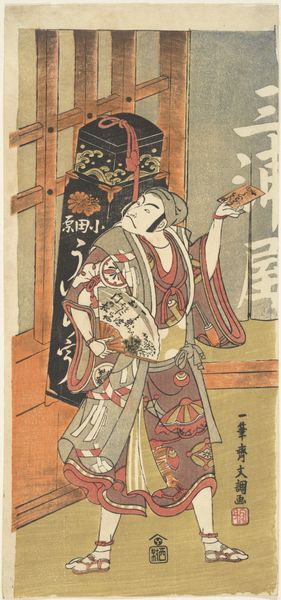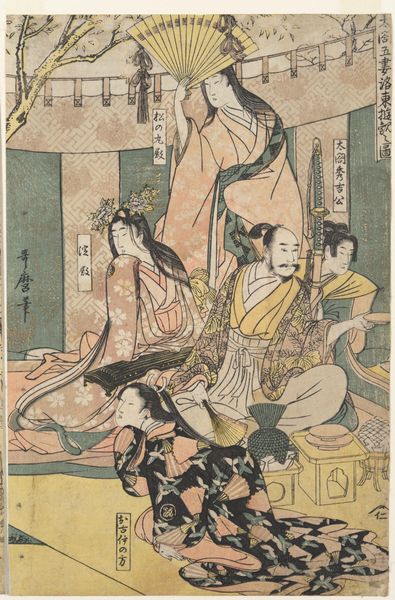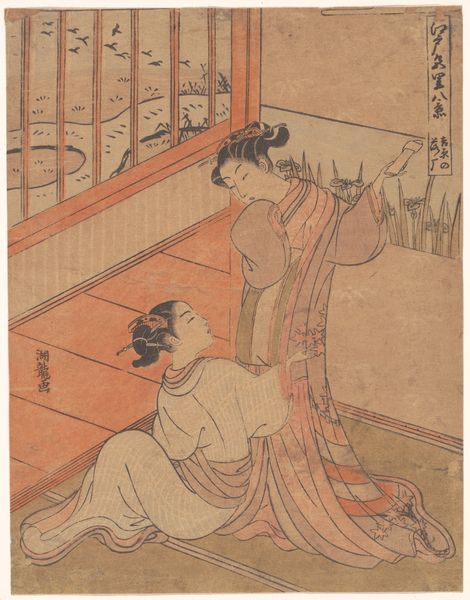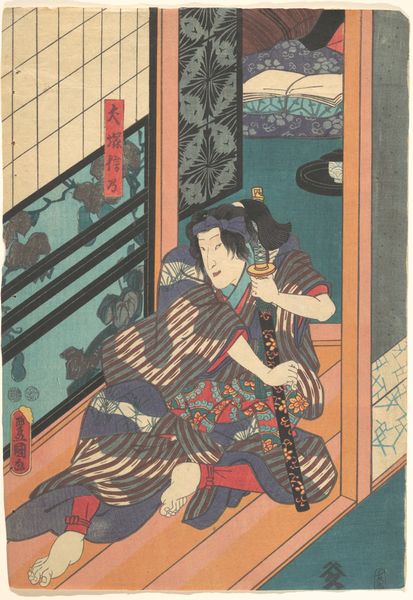
Two Young Women Reading Books c. 1767 - 1768
0:00
0:00
#
toned paper
#
childish illustration
#
cartoon like
#
cartoon based
# print
#
asian-art
#
japan
#
cartoon sketch
#
handmade artwork painting
#
watercolour illustration
#
cartoon style
#
cartoon carciture
#
watercolor
Dimensions: 27.4 × 20.9 cm (10 3/4 × 8 1/4 in.)
Copyright: Public Domain
Curator: Let’s observe "Two Young Women Reading Books," a print crafted around 1767-1768 by Suzuki Harunobu, currently residing at the Art Institute of Chicago. Editor: It’s instantly appealing. There's a gentle mood to the scene, and the light washes across the figures and the stylized landscape in the background, a delicate balance of human interaction and the world beyond. Curator: Precisely, the setting provides an interesting lens. It's important to note the influence of the Edo period in shaping social views and cultural representations of women through art like this. Harunobu presents us with an intimate moment, reflective of the era's complex attitudes towards women and their roles within the domestic sphere. Editor: Yes, but I also consider the physicality of the piece—it is a woodblock print. We have to appreciate the artist's labor and the workshop production involved. From carving the blocks to the application of ink and the pressing onto paper, these artisanal steps really give us insight into the creative economy of the period. How were prints distributed? Who had access to them? Curator: Indeed, these are vital questions that help illuminate the political dimensions inherent in art circulation. What did it mean for these prints to be consumed? And who controlled those representations? Editor: The way the kimonos' patterns have been meticulously reproduced—you can see that intense labor. Even the choice of what's depicted is related to available materials and tools; such aspects determined the feasibility of the whole project. Curator: That's insightful, particularly when contextualized with censorship and sumptuary laws in place at the time. The print suggests that beyond simply depicting aesthetic beauty, it was involved with negotiations around status and social expectations within its viewing culture. Editor: Right. I mean, art is never just "art." The materiality—the labor involved, the methods of distribution—tells stories about class, craft, and even control of the narrative at that historical moment. It offers an insightful reflection into Japan’s creative ecosystem then. Curator: Agreed. Looking closely, we see how this piece serves both as a reflection of, and an active participant in shaping its period's values.
Comments
No comments
Be the first to comment and join the conversation on the ultimate creative platform.

